Can You Use Pine Firewood Indoors? Dispelling the Myths
Can you burn pine firewood indoors? Learn the facts, debunk myths, and get tips for safely using pine in your wood stove.
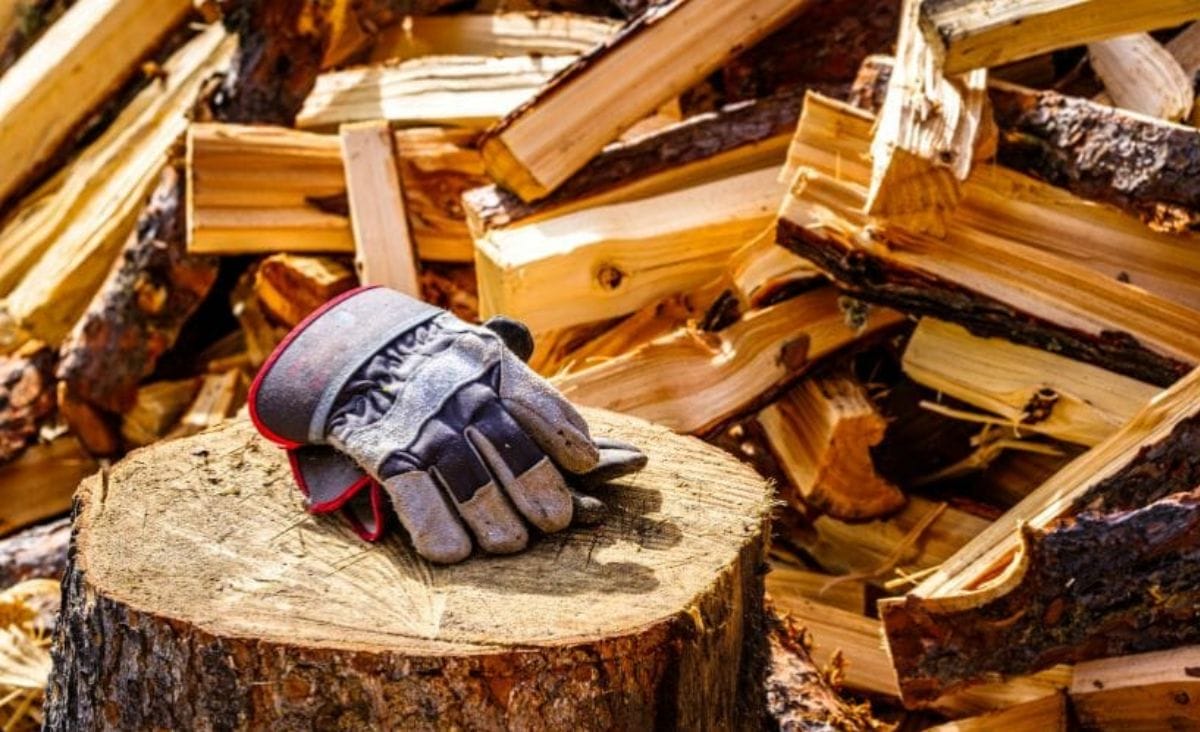
When temperatures drop, a wood stove becomes the heart of many homes, providing warmth and comfort. But not all firewood is created equal. Pine, with its inviting aroma and availability, often sparks questions about its safety and efficiency for indoor use.
This post dives into the facts and debunks common myths about burning pine firewood. From seasoning to creosote buildup, we’ll explore everything you need to know to make an informed decision about using pine in your wood stove.
The Myths Surrounding Pine Firewood
Many believe burning pine leads to excessive creosote buildup, increasing the risk of chimney fires. The sticky resins in pine often get the blame, but is this fear justified?
What is Creosote?
Creosote forms when wood burns and releases gases that condense on cooler chimney walls. Over time, these deposits accumulate, creating a fire hazard. While resin-rich wood like pine does produce more smoke, creosote buildup primarily results from low-temperature fires, regardless of the wood type.
“Some people assume the sticky, gum-like resins in pine firewood cause more creosote residues than hardwood. Research has found this is false. The buildup is more often the result of burning wood at relatively low temperatures. Burning poorly seasoned wood favors creosote buildup because evaporating water cools the burning process.”
Paul Pugliese [Agriculture and Natural Resources Agent, University of Georgia Extension]
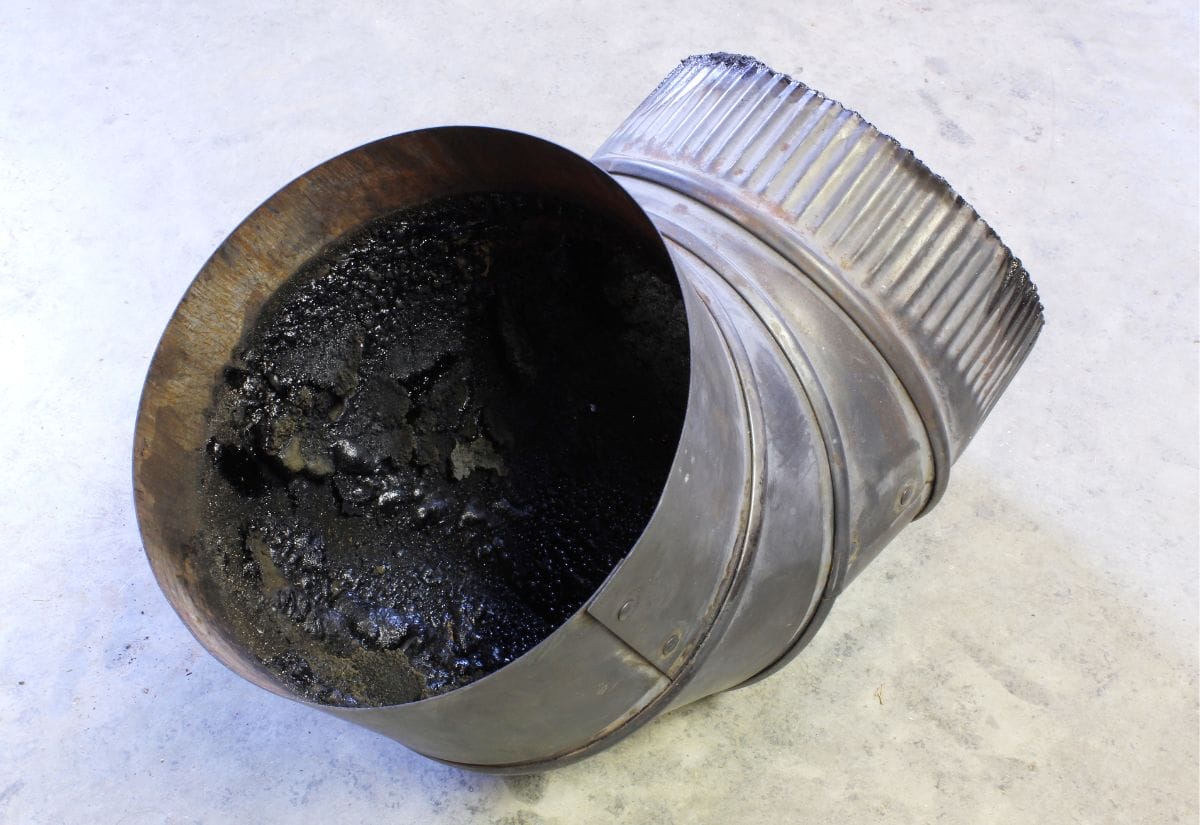
Can Pine Be Used for Firewood?
Yes, pine is a perfectly viable option for your wood stove—provided it’s seasoned properly and burned correctly. Here’s why pine can be a great choice:
Pine’s Heat Output
Pine has a lower BTU (British Thermal Unit) rating than hardwood, making it less dense and faster-burning. This characteristic can be both a pro and a con, depending on your needs.
- White Pine: 15.9 BTUs
- Ponderosa Pine: 16.2 BTUs
- Lodgepole Pine: 21.1 BTUs
In regions with mild winters, pine offers sufficient heat. For colder climates, it shines as a transitional wood for warming up chilly mornings or evenings in fall and spring.
If you’re curious about how pine compares to other types of firewood in terms of heat output, check out our detailed guide on choosing the best firewood. It includes a handy chart with BTU ratings for various woods to help you make the perfect choice for your home.
Pine as a Firestarter
Thanks to its high sap content, pine lights easily and burns quickly, making it perfect for getting a fire going with minimal effort. It’s ideal for starting fires or kindling to ignite denser hardwood logs, especially during cold mornings when you need instant warmth. Its quick ignition and hot flames can also help preheat your flue, reducing smoke and creosote formation right from the start.
How to Safely Burn Pine Firewood
To safely enjoy pine firewood, follow these tips:
Proper Seasoning
Season pine for 6–12 months to reduce its moisture content below 20%, which is essential for efficient burning. Use a moisture meter to confirm dryness, as even slightly damp wood can produce excessive smoke and lower heat output.
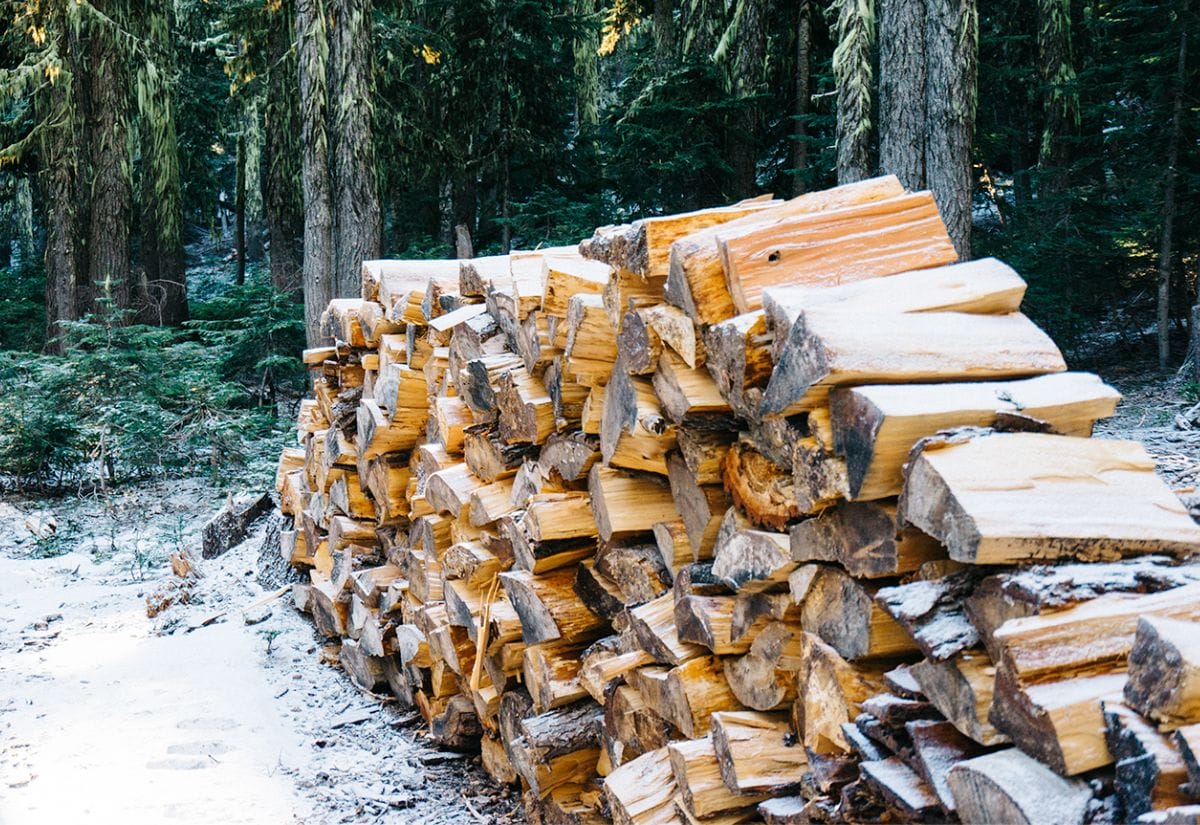
Properly seasoned pine burns hotter and cleaner, reducing creosote buildup and the risk of chimney fires. Also, well-seasoned wood is easier to ignite and helps maintain a more consistent, high-temperature fire, making it ideal for indoor use.
Efficient Fire Building
- Stack logs loosely for better airflow.
- Keep the stove damper fully open when starting the fire.
- Preheat the flue with rolled-up, lit newspaper to reduce condensation and creosote.
Regular Maintenance
The National Fire Protection Association recommends annual chimney inspections and cleanings to minimize creosote risks, regardless of the firewood used. Regular maintenance ensures your chimney stays clear of dangerous buildup, improving airflow and preventing potential fire hazards. Even if you’re burning seasoned wood, soot and debris can accumulate over time, making professional inspections a key part of safe wood stove use.
The Cost of Pine Firewood
Pine is often more affordable than hardwood due to lingering myths about creosote. If you live in a region abundant in pine, you might even source it for free. Check local classifieds or connect with landowners looking to clear dead or fallen trees.
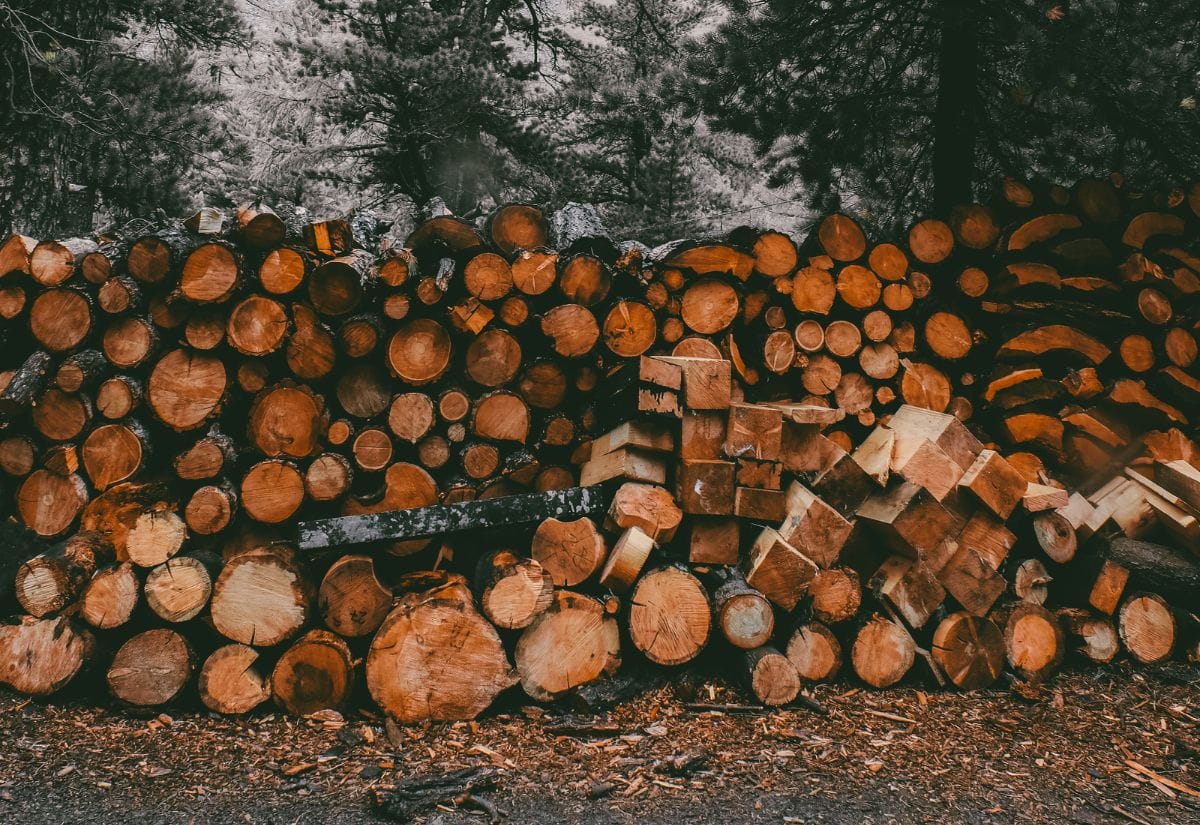
In my Maine farmhouse, we harvest standing deadwood, mostly pines, for firewood. The cost savings and the ease of sourcing make pine a practical choice for us.
Pros and Cons of Burning Pine Firewood
Thinking about using pine firewood? Here’s a quick look at the good and not-so-good to help you decide if it’s the right choice for you:
Pros:
- Easy to Ignite: Lights quickly, making it excellent for kindling.
- Affordable: Often available for free or at a low cost.
- Aromatic: Emits a pleasant pine scent.
Cons:
- Fast-Burning: Requires frequent replenishing.
- Sparks and Smoke: Higher resin content can cause sparking.
- Sticky Sap: Makes handling and splitting messy.
Answers to Your Burning Questions About Pine Firewood
Tips for Burning Pine Firewood
To get the most out of your pine firewood:
- Use pine for morning or evening fires to warm up your home quickly.
- Combine pine with hardwood to extend burn times.
- Save sap-filled pieces as natural fire starters for convenience.
Share the pine firewood facts! Pin this post.
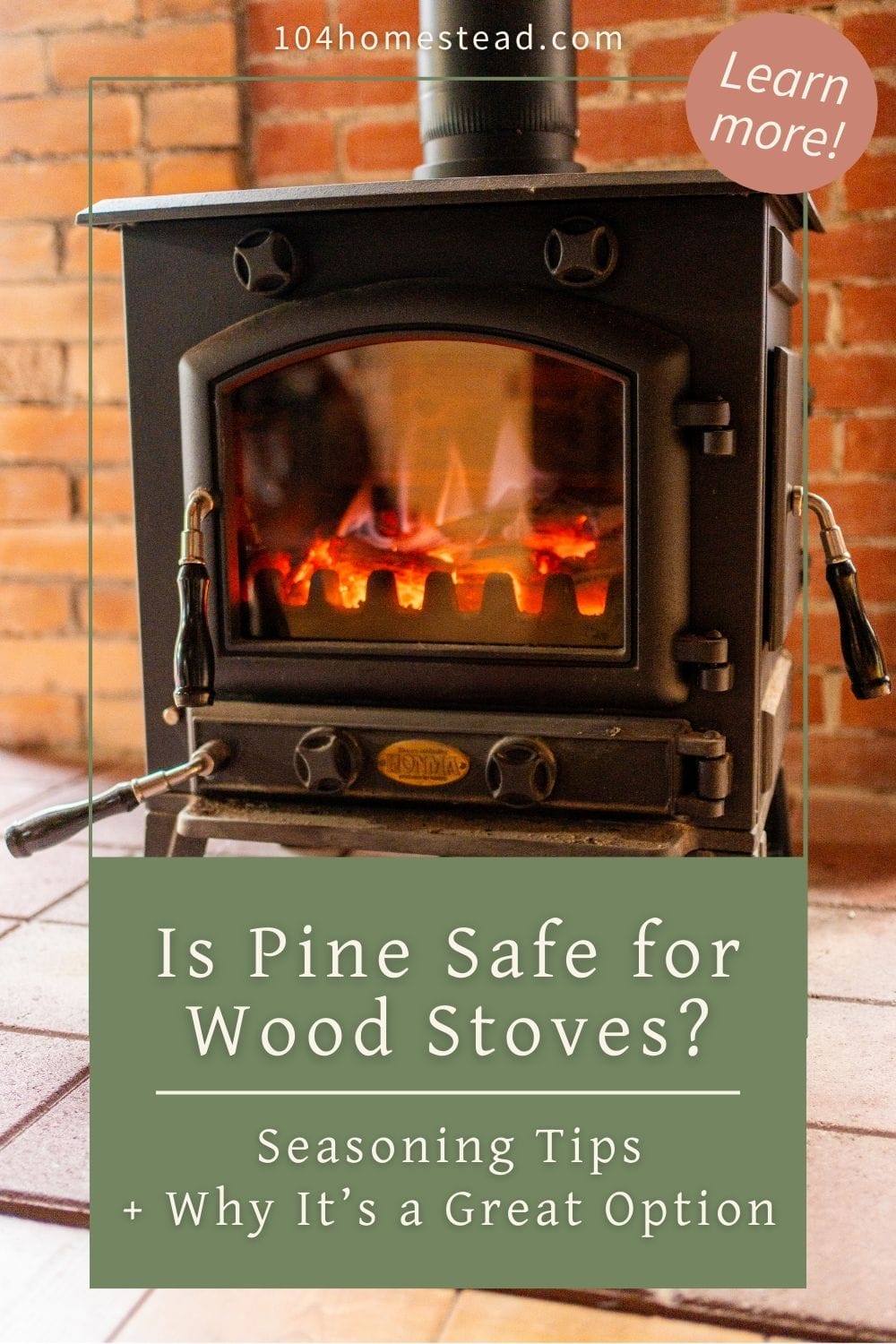
With proper seasoning, safe burning practices, and regular maintenance, pine firewood can be a practical and enjoyable choice for your wood stove. It’s affordable, readily available, and fills your home with a delightful pine aroma.
Looking to make the most of your wood stove? Learn how to source firewood for free, choose the right type for maximum efficiency, and store it properly to keep it dry and ready to burn. Plus, discover simple tips for keeping your wood stove glass clean and clear for a cozy, hassle-free experience.
Have you tried burning pine in your wood stove? Share your experiences or tips in the comments below—your insights might inspire others to give pine firewood a chance!





In Alaska we burned pine/fir/spruce all the time because other than white burch there are no hardwoods in the boreal forest.Now that I’ve moved to Maine everyone is telling me I can’t use it in my woodstove. Fortunately I know better. Good article.
In Alaska we burned pine/fir/spruce all the time because other than white burch there are no hardwoods in the boreal forest.Now that I’ve moved to Maine everyone is telling me I can’t use it in my woodstove. Fortunately I know better. Good article.